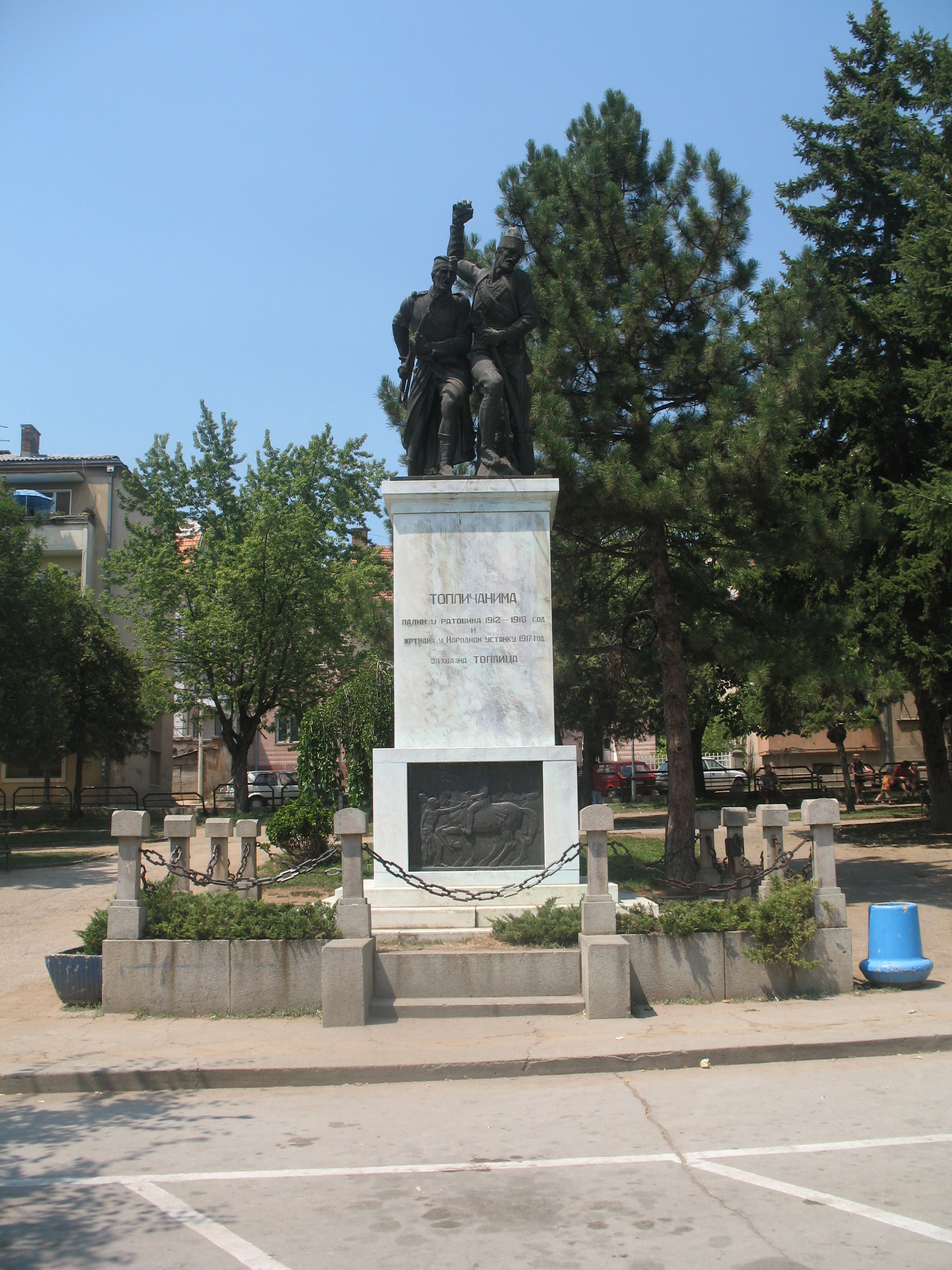|
Miodrag Grbić
Miodrag Grbić, (25 December 1901 – 30 June 1969 in Belgrade) was a Serbian archeologist and custos. He studied in Prague, where he gained a Ph.D. in archeology. He published the '' Archaeologia Iugoslavica'' journal together with Nikola Vulić. Most of his works are about the Neolithic in the Balkans The Balkans ( , ), corresponding partially with the Balkan Peninsula, is a geographical area in southeastern Europe with various geographical and historical definitions. The region takes its name from the Balkan Mountains that stretch throug .... Grbić discovered Starčevo culture as the oldest local Neolithic culture. He was also the first to conduct research in Pločnik archeological site near Prokuplje. References *''Grbić, Mihailo'' in Enciklopedija srpske istoriografije, Beograd 1997 20th-century Serbian people Serbian archaeologists 1901 births 1969 deaths Yugoslav archaeologists 20th-century archaeologists {{Serbia-academic-bio-stub ... [...More Info...] [...Related Items...] OR: [Wikipedia] [Google] [Baidu] |
Belgrade
Belgrade is the Capital city, capital and List of cities in Serbia, largest city of Serbia. It is located at the confluence of the Sava and Danube rivers and at the crossroads of the Pannonian Basin, Pannonian Plain and the Balkan Peninsula. The population of the Belgrade metropolitan area is 1,685,563 according to the 2022 census. It is one of the Balkans#Urbanization, major cities of Southeast Europe and the List of cities and towns on the river Danube, third-most populous city on the river Danube. Belgrade is one of the List of oldest continuously inhabited cities, oldest continuously inhabited cities in Europe and the world. One of the most important prehistoric cultures of Europe, the Vinča culture, evolved within the Belgrade area in the 6th millennium BC. In antiquity, Thracians, Thraco-Dacians inhabited the region and, after 279 BC, Celts settled the city, naming it ''Singidunum, Singidūn''. It was Roman Serbia, conquered by the Romans under the reign of Augustus and ... [...More Info...] [...Related Items...] OR: [Wikipedia] [Google] [Baidu] |
Pločnik (archaeological Site)
Pločnik (archaeological site) is located in Pločnik, Prokuplje village in the Toplica District of Serbia. A 120 hectare settlement belonging to the Neolithic Vinča culture existed on the site from 5500 BCE until it was destroyed by fire in 4700 BCE. History The Vinča houses at Pločnik had stoves and special holes specifically for rubbish, and the dead were buried in cemeteries. People slept on woollen mats and fur and made clothes of wool, flax and leather. The figurines found not only represent deities but many show the daily life of the inhabitants while crude pottery finds appear to have been made by children. Women are depicted in short tops and skirt wearing jewellery. A thermal well found near the settlement might be evidence of Europe's oldest spa. Metallurgy In 2007 it was reported that a preliminary dating of a Pločnik copper workshop with a furnace and copper tools to 5,500 BCE, if correct, indicated the Copper Age could have started in Europe 500 years or ... [...More Info...] [...Related Items...] OR: [Wikipedia] [Google] [Baidu] |
1969 Deaths
1969 (Roman numerals, MCMLXIX) was a common year starting on Wednesday of the Gregorian calendar, the 1969th year of the Common Era (CE) and ''Anno Domini'' (AD) designations, the 969th year of the 2nd millennium, the 69th year of the 20th century, and the 10th and last year of the 1960s decade. Events January * January 4 – The Government of Spain hands over Ifni to Morocco. * January 5 – Ariana Afghan Airlines Flight 701 crashes into a house on its approach to London's Gatwick Airport, killing 50 of the 62 people on board and two of the home's occupants. * January 14 – USS Enterprise fire, An explosion aboard the aircraft carrier USS Enterprise (CVN-65), USS ''Enterprise'' near Hawaii kills 28 and injures 314. * January 16 – First successful docking of two crewed spacecraft in orbit and the first transfer of crew from one space vehicle to another (by a space walk) between Soviet craft Soyuz 5 and Soyuz 4. * January 18 – Failure of Soyuz 5's service module to separ ... [...More Info...] [...Related Items...] OR: [Wikipedia] [Google] [Baidu] |
1901 Births
December 13 of this year is the beginning of signed 32-bit computing, 32-bit Unix time, and is scheduled to end in Year 2038 problem, January 19, 2038. Summary Political and military 1901 started with the Federation of Australia, unification of multiple Crown colony, British colonies in Australia on January 1 to form the Australia, Commonwealth of Australia after a 1898–1900 Australian constitutional referendums, referendum in 1900, Subsequently, the 1901 Australian federal election, 1901 Australian election would see the first Prime Minister of Australia, Australian prime minister, Edmund Barton. On the same day, Nigeria became a Colonial Nigeria, British protectorate. Following this, the Victorian era, Victorian Era would come to a end after Queen Victoria died on January 22 after a reign of 63 years and 216 days, which was List of monarchs in Britain by length of reign, longer than those of any of her predecessors, Her son, Edward VII, succeeded her to the throne. ... [...More Info...] [...Related Items...] OR: [Wikipedia] [Google] [Baidu] |
Serbian Archaeologists
Serbian may refer to: * Pertaining to Serbia in Southeast Europe; in particular **Serbs, a South Slavic ethnic group native to the Balkans ** Serbian language ** Serbian culture **Demographics of Serbia, includes other ethnic groups within the country *Pertaining to other places **Serbia (other) **Sorbia (other) *Gabe Serbian (1977–2022), American musician See also * * * Sorbs * Old Serbian (other) Old Serbian may refer to: * someone or something related to the Old Serbia, a historical region * Old Serbian language, a general term for the pre-modern variants of Serbian language, including: ** the Serbian recension of Old Church Slavonic la ... {{Disambiguation Language and nationality disambiguation pages ... [...More Info...] [...Related Items...] OR: [Wikipedia] [Google] [Baidu] |
Enciklopedija Srpske Istoriografije
''The Encyclopedia of Serbian Historiography'' is a one-volume encyclopedia on Serbian historiography, art history, literary history, ethnology and archaeology, edited by Sima Ćirković and Rade Mihaljčić. Structure The encyclopedia features articles by more than 350 authors, divided into three parts: Serbian Historiography Serbian Historiography Serbian historiography ( sr-Cyrl, српска историографија, srpska istoriografija) refers to the historiography (methodology of history studies) of the Serb people since the founding of Serbian statehood. The development can ... 1997 non-fiction books Historiography of Serbia 20th-century encyclopedias {{Serbia-hist-stub ... [...More Info...] [...Related Items...] OR: [Wikipedia] [Google] [Baidu] |
Prokuplje
Prokuplje ( sr-Cyrl, Прокупље, ) is a city and the administrative center of the Toplica District in southern Serbia. As of 2022 census, the municipality has a population of 38,054 inhabitants. Prokuplje is one of the Roman sites of Serbia. When South Serbs first settled in this area in the 6th century, the city was known as ''Komplos''. The town was known as Ürgüp during Ottoman rule. After Serbia's victory over the Ottomans, Prokuplje was incorporated into the Kingdom of Serbia in 1878. Geography The Toplica district is located in southern Serbia, in the central part of the Balkan peninsula. Prokuplje is located between municipalities of Blace, Kuršumlija, Bojnik, Žitorađa, Merošina, Aleksinac, and Kruševac. Climate Prokuplje has a humid continental climate (Köppen climate classification: ''Dfa''). History and archaeology Neolithic and Copper Age The traces of early settlements can be found at Neolithic sites such as Macina (near Zitni Potok), Kavol ... [...More Info...] [...Related Items...] OR: [Wikipedia] [Google] [Baidu] |
Starčevo Culture
The Starčevo culture is an archaeological culture of Southeastern Europe, dating to the Neolithic period between ''c.'' 6200 and 4500 BCE.Istorijski atlas, Intersistem Kartografija, Beograd, 2010, page 11. It originates in the spread of the Neolithic package of peoples and technological innovations including farming and ceramics from Anatolia to the area of Sesklo. The Starčevo culture marks its spread to the inland Balkan peninsula as the Cardial ware culture did along the Adriatic coastline. It forms part of the wider Starčevo–Körös–Criş culture which gave rise to the central European Linear Pottery culture c. 700 years after the initial spread of Neolithic farmers towards the northern Balkans. The Starčevo site, the type site, is located on the north bank of the Danube near the village of Starčevo in Serbia (Vojvodina province), opposite Belgrade. Origins The Starčevo culture represents a northern expansion of Early Neolithic Farmers who settled from A ... [...More Info...] [...Related Items...] OR: [Wikipedia] [Google] [Baidu] |
Serbia
, image_flag = Flag of Serbia.svg , national_motto = , image_coat = Coat of arms of Serbia.svg , national_anthem = () , image_map = , map_caption = Location of Serbia (green) and the claimed but uncontrolled territory of Kosovo (light green) in Europe (dark grey) , image_map2 = , capital = Belgrade , coordinates = , largest_city = capital , official_languages = Serbian language, Serbian , ethnic_groups = , ethnic_groups_year = 2022 , religion = , religion_year = 2022 , demonym = Serbs, Serbian , government_type = Unitary parliamentary republic , leader_title1 = President of Serbia, President , leader_name1 = Aleksandar Vučić , leader_title2 = Prime Minister of Serbia, Prime Minister , leader_name2 = Đuro Macut , leader_title3 = Pres ... [...More Info...] [...Related Items...] OR: [Wikipedia] [Google] [Baidu] |
Balkans
The Balkans ( , ), corresponding partially with the Balkan Peninsula, is a geographical area in southeastern Europe with various geographical and historical definitions. The region takes its name from the Balkan Mountains that stretch throughout the whole of Bulgaria. The Balkan Peninsula is bordered by the Adriatic Sea in the northwest, the Ionian Sea in the southwest, the Aegean Sea in the south, the Turkish straits in the east, and the Black Sea in the northeast. The northern border of the peninsula is variously defined. The highest point of the Balkans is Musala, , in the Rila mountain range, Bulgaria. The concept of the Balkan Peninsula was created by the German geographer August Zeune in 1808, who mistakenly considered the Balkan Mountains the dominant mountain system of southeastern Europe spanning from the Adriatic Sea to the Black Sea. In the 19th century the term ''Balkan Peninsula'' was a synonym for Rumelia, the parts of Europe that were provinces of the Ottoman E ... [...More Info...] [...Related Items...] OR: [Wikipedia] [Google] [Baidu] |
Neolithic
The Neolithic or New Stone Age (from Ancient Greek, Greek 'new' and 'stone') is an archaeological period, the final division of the Stone Age in Mesopotamia, Asia, Europe and Africa (c. 10,000 BCE to c. 2,000 BCE). It saw the Neolithic Revolution, a wide-ranging set of developments that appear to have arisen independently in several parts of the world. This "Neolithic package" included the History of agriculture, introduction of farming, domestication of animals, and change from a hunter-gatherer lifestyle to one of sedentism, settlement. The term 'Neolithic' was coined by John Lubbock, 1st Baron Avebury, Sir John Lubbock in 1865 as a refinement of the three-age system. The Neolithic began about 12,000 years ago, when farming appeared in the Epipalaeolithic Near East and Mesopotamia, and later in other parts of the world. It lasted in the Near East until the transitional period of the Chalcolithic (Copper Age) from about 6,500 years ago (4500 BCE), marked by the development ... [...More Info...] [...Related Items...] OR: [Wikipedia] [Google] [Baidu] |





